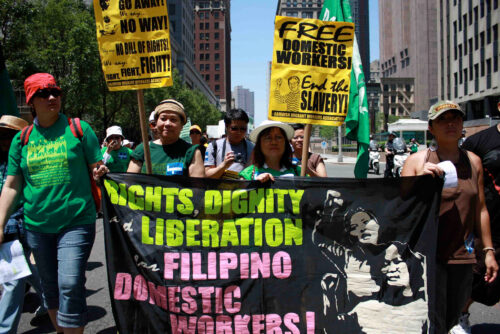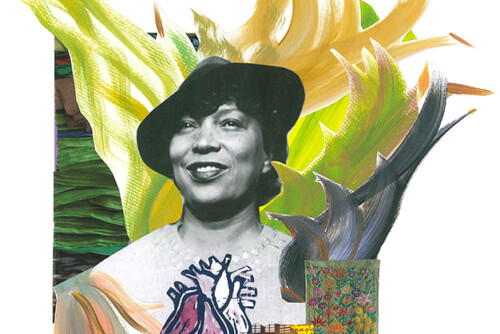Neoliberalism and the Mexico City Policy
In the 1980s, this longstanding liberal population control regime was dramatically refigured. Thatcher and Reagan launched the economic reorganization of the global relations of empire under the new terms of structural adjustment programs and neoliberalization, and something strange happened to family planning and the biopolitics of the US imperial imagination as well. In his Mexico City Declaration of 1984, Reagan announced the withdrawal of all USAID funds to any program that provided or advocated abortion, pandering to the evangelical Christian right, and eliminating family planning monies for 800 programs in 80 countries, mostly in nations where abortion was illegal anyway—in effect, decimating birth control programs. The declaration marked the beginning of the end of the dominance of the overpopulation paradigm as a way of understanding how “we” were doing good for “them.”
Instead, the neoliberal moment has been characterized by new discourses: of individual responsibility, rights, and—in place of birth control and sterilization—adoption. Beginning in the eighties, evangelical Christians emerged as key players in globalization, and as a result, the culture wars went global.9 Under the Bush II administration, faith-based organizations became the preferred partners for US foreign aid, and even secular NGOs began to tailor their policies to include concerns about sex-trafficking and orphans—often code for sex workers and single mothers. Attacks on single motherhood and nonmarital sex became the hallmarks of the regimes of “personal responsibility,” and abstinence-only HIV prevention and antigay religious positions became central to how US federal money was distributed to the Global Fund to Fight AIDS, TB, and Malaria.10 To me, the most striking occurence in the immediate aftermath of the 2010 earthquake in Haiti was not exactly the Baptists who went around collecting children in Port-au-Prince and putting them in a van, only to be arrested at the border with the Dominican Republic. It was actually the plane that arrived a few days earlier with Pennsylvania Governor Ed Rendell and the blessing of the Obama Administration to airlift two Evangelical women and many of the children in their so-called orphanage—“orphans,” who almost all had living parents, albeit of the single mother sort.11 That Democratic politicians almost immediately turned their imaginations to “rescuing” orphans and Evangelicals, not to mention sending troops—troops that introduced a devastating cholera epidemic that has killed a great many more people than the earthquake did, we might add—rather than, say, sending money, food, and water, tells us a great deal about the contemporary biopolitics of foreign aid.12
I want to turn now specifically to Guatemala, to see how these broad changes were produced in one particular place. Just as Puerto Rico was crucial to the elaboration of the regime of population control, I would suggest that Guatemala was a laboratory both for neoliberalism broadly and the biopolitics of adoption specifically. In the 1980s, representatives of California’s Church of the Word, conspicuously, the pastor and military junta leader Efraín Ríos Montt, became central to Guatemala’s genocidal war for free markets, and a key piece of the alliance with Ronald Reagan’s administration. During the 40-year civil war, the military and paramilitaries kidnapped the children of indigenous people and leftists to prevent the reproduction of another generation of “reds.” At least 1,000, and probably, in fact, several thousands of children were disappeared in this way during the war. Most were adopted into other indigenous communities or Ladino families in Guatemala, but some wound up in international adoptions to the United States and Europe, helping inaugurate the global system of transnational adoption.
After the Peace Accords of 1996, using the networks built during the war, Guatemala opened its doors to transnational adopters, in effect shifting what had been a furious genocidal campaign within the nation against indigenous people into a scattering of their children internationally. Of course, the war had never been a strictly national affair, beginning with the CIA’s overthrow of elected president Jacobo Arbenz13 and continuing through Ronald Reagan’s insistence that Efraín Ríos Montt (convicted and then un-convicted of genocide as of this writing in late 2013) was getting a “bum rap” on human rights and deserved US support in 1982, in the midst of the period in which his military was obliterating 662 separate indigenous communities.14 Yet that effort was always channeled through the nation; it mattered a great deal that it was the Guatemalan military and presidency that authorized such actions, whatever the involvement of the US intelligence establishment or US weaponry. The conclusion of the war represented the victory of a Guatemalan and international business community that wanted an end to controversies about human rights, and sought integration of the Guatemalan economy into an international neoliberal one.
The effect of such a shift on adoption politics was electric. In the early 2000s, one in 100 Guatemalan babies born was sent to be raised as an adopted US American. For some in Guatemala, the emergence of this adoption market seemed to mark the continuation of horrific human rights violations, while those who claimed to speak for what I want to call “Guatemalan family values” demanded that everyone had the right to send their children into transnational adoptions. At the same time that the US evangelical right was arguing for “adoption, not abortion,” within the United States, their Guatemalan counterparts were demanding the protection of the “right” to send the children of their massively impoverished and indigenous and disenfranchised populations out of the country. For those in the United States, “their” children remained a key site for emotional attachment to a globalizing empire, as the location of the problems of fertility and reproduction made their neoliberal shift from the population to the individual child.
In the decade of the 1990s, and after 2000, human rights advocates who had been involved in activism as family members of the disappeared cast transnational adoption from Guatemala to the United States as another kind of disappearance, with the postwar, post-genocidal actors recast from paramilitaries to criminal mafias, from militaries to judges and social workers. They attempted to use the international UN Convention on the Rights of the Child to cast transnational adoption as a violation of the rights of the child to protection and care. Indigenous activists, in contrast, cast adoption as a violation of rights to indigenous sovereignty and self-determination—most of the children adopted were indigenous—and argued that indigenous Guatemalan communities had always had a tradition of raising children who were orphaned or homeless, and that the claim that adoption solved a problem in relationship to impoverished indigenous communities was ludicrous. Liberals wrote about poverty, and the difficult choices of single mothers or families to make a child available for adoption rather than face hunger and malnutrition or child labor and child marriage.
Conservatives in Guatemala (as in the United States) vigorously attacked the Convention on the Rights of the Child, claiming it was an assault on the autonomy of the family, that it would be horrendously expensive to enforce, and they attempted to unite Catholics and Evangelical Protestants around the claim that parental rights included the right to relinquish a child for adoption, invoking the legal notion of “patria potestad,” of absolute parental authority over children. In the United States and internationally, adoption was a subsidiary issue of the abortion debate; Evangelical groups insisted that adoption should be easy and secret, with single mothers urged to relinquish their children, so they could be raised with a father. US-based Evangelicals were some of the most active adopters, both internationally and domestically.15
Interestingly, although these Guatemalan battles raged for two decades, sparking demonstrations, legislation, court battles, international investigations and scandals, and even political murder, it was a feminist group, Fundacion Sobreviventes, the Survivors Foundation, originally active around child sexual abuse and femicide, that finally in 2008 drew US attention to allegations of massive fraud in adoptions from Guatemala, with mothers whose children had been kidnapped by criminal gangs demonstrating with empty strollers, and engaging in hunger strikes that generated international media attention.16 As I argue below, none of that actually made a difference—it was an assault on the legal-scientific discourse of DNA that finally resulted in real change.
The emergence of these kinds of rights claims—not the rights of the child and only with extreme difficulty the rights of mothers, although fathers and transnational adopters rights fared well—is evidence of new neoliberal political rationalities, a new regime of reproductive governance. The moral provocations of what Ulrich Breck has termed “the risk society” are taken up positively in terms of a weak notion of “rights,” coupled with “responsibilities”—the right to place a child for adoption—a transformation facilitated in the United States by the transition from a right to abortion to the “right to choose,” which, as Rickie Solinger has pointed out, is no kind of right at all, but a consumerist, market term.17
- Michelle Goldberg, The Means of Reproduction: Sex, Power, and the Future of the World (New York: Penguin, 2009). [↩]
- Thomas Edsall, “Grants Flow to Bush Allies on Social Issues,” Washington Post 22 Mar.2006; Esther Kaplan, With God on Their Side: George W. Bush and the Christian Right (New York: New Press, 2005): 214-18. [↩]
- Associated Press, “None of 33 Kids Taken by U.S. Baptists Is an Orphan,” Arizona Daily Star, 21 Feb.2010; Jonathan Wander, “Love and Haiti,” Pittsburgh Magazine, Jan. 2009. [↩]
- Chen-Shan Chin and Jon Sorenson, et al., “The Origin of the Haitian Cholera Outbreak Strain,” New England Journal of Medicine 364 (2011): 33-42. [↩]
- The definitive account is the CIA’s; see George Washington University’s National Security Archive for the documents: http://www.gwu.edu/~nsarchiv/NSAEBB/NSAEBB4/. [↩]
- See Beatriz Manz, Paradise in Ashes: A Guatemalan Journey of Courage, Terror, And Hope (Berkeley: U of California P, 2005). [↩]
- For a fuller discussion of these arguments and the positions within them, see Laura Briggs, Somebody’s Children: The Politics of Transracial and Transnational Adoption (Durham: Duke UP, 2012): 197-240. [↩]
- Julieta Sandoval, “Soy una sobreviviente,” Prensa Libre, 20 Apr. 2008; “Ministerio Público y Fundación Sobrevivientes suscriben convenio de cooperación,” Prensa Libre, 12 Feb. 2008. [↩]
- Rickie Solinger, Beggars and Choosers: How the Politics of Choice Shapes Adoption, Abortion, and Welfare in the United States (New York: Hill and Wang, 2001). [↩]




